The Vanishing Art of How to Spot (That Means Retouch) a Picture.
by Vyger in Design > Digital Graphics
38002 Views, 139 Favorites, 0 Comments
The Vanishing Art of How to Spot (That Means Retouch) a Picture.
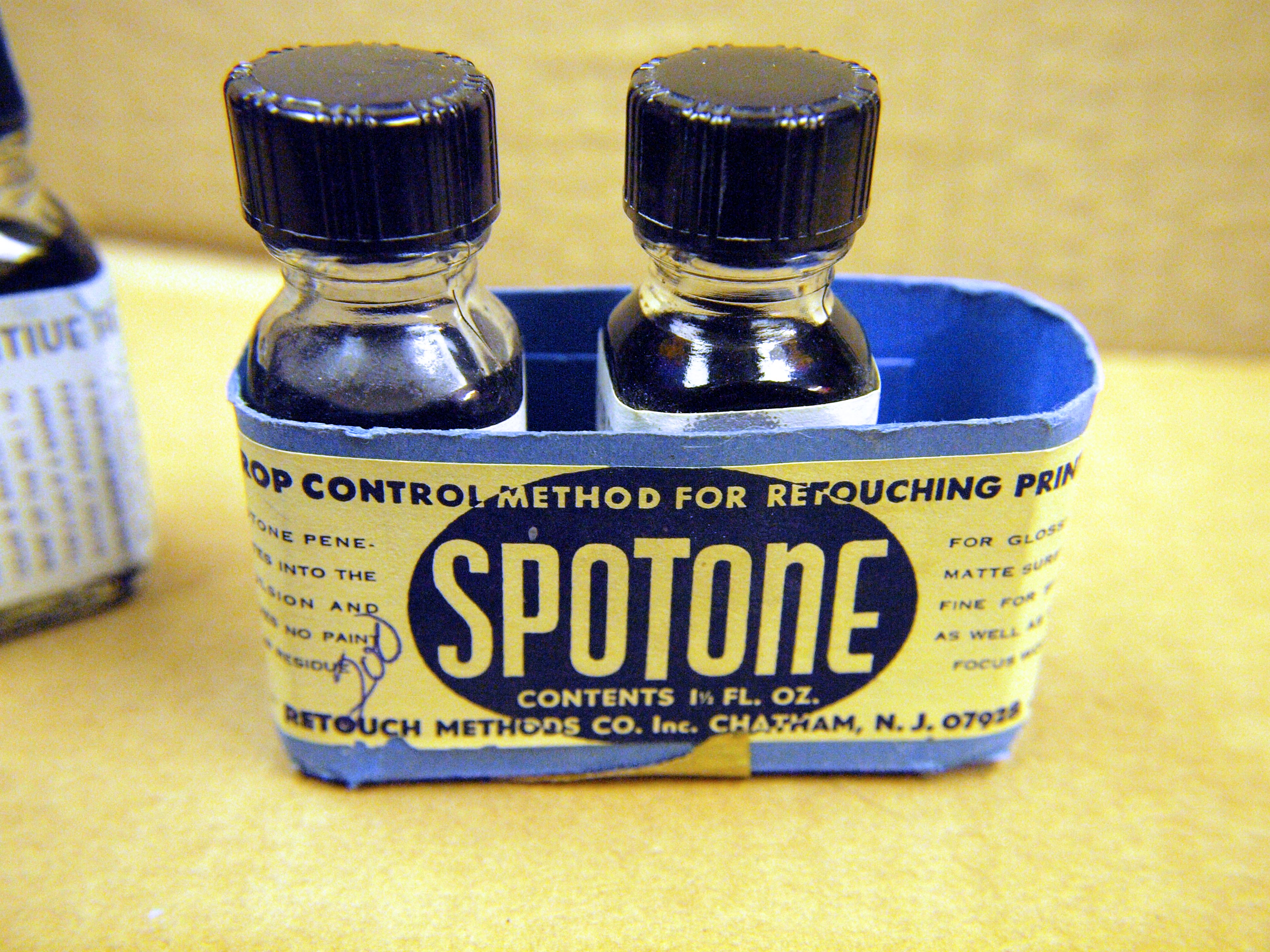
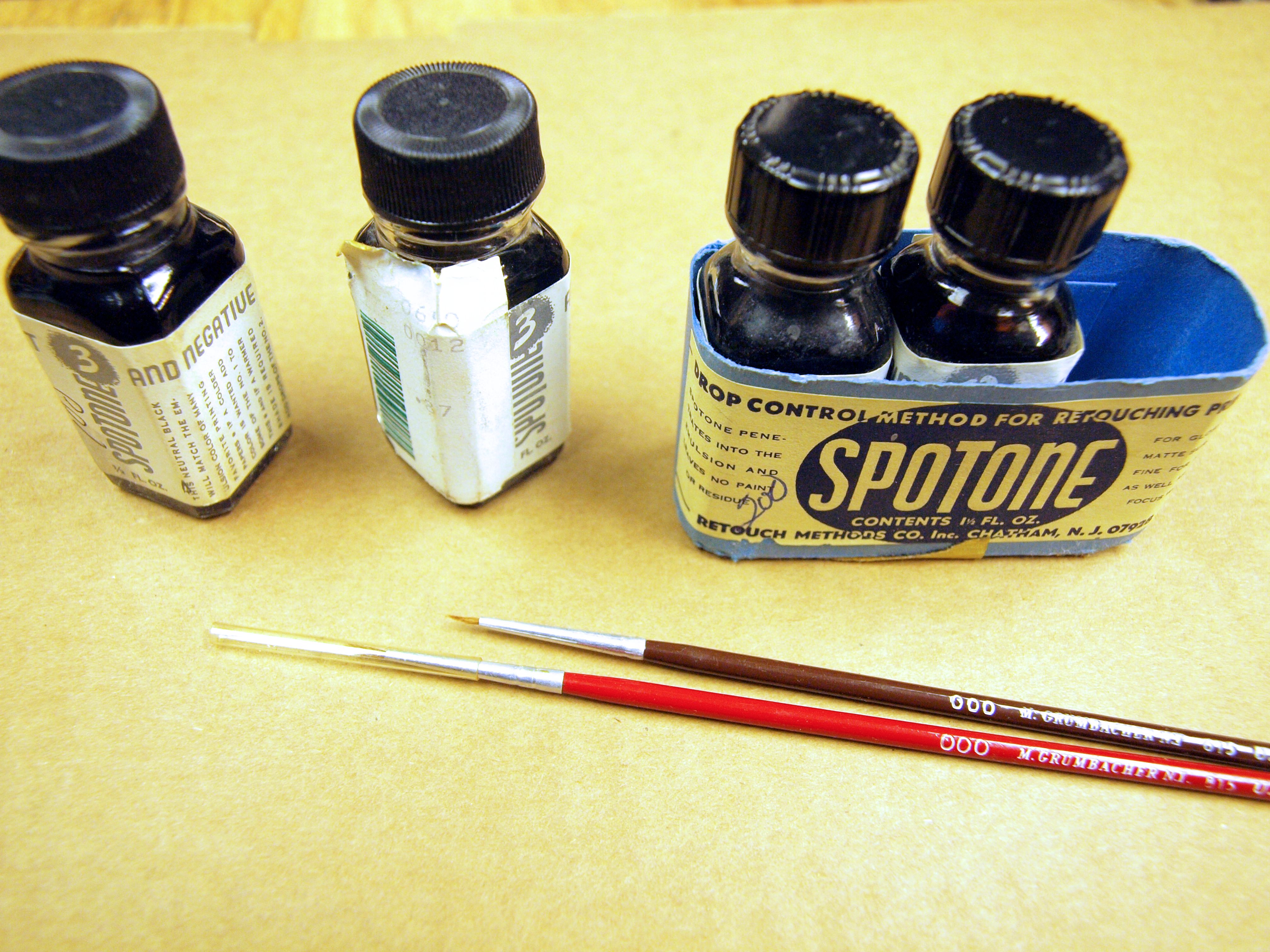
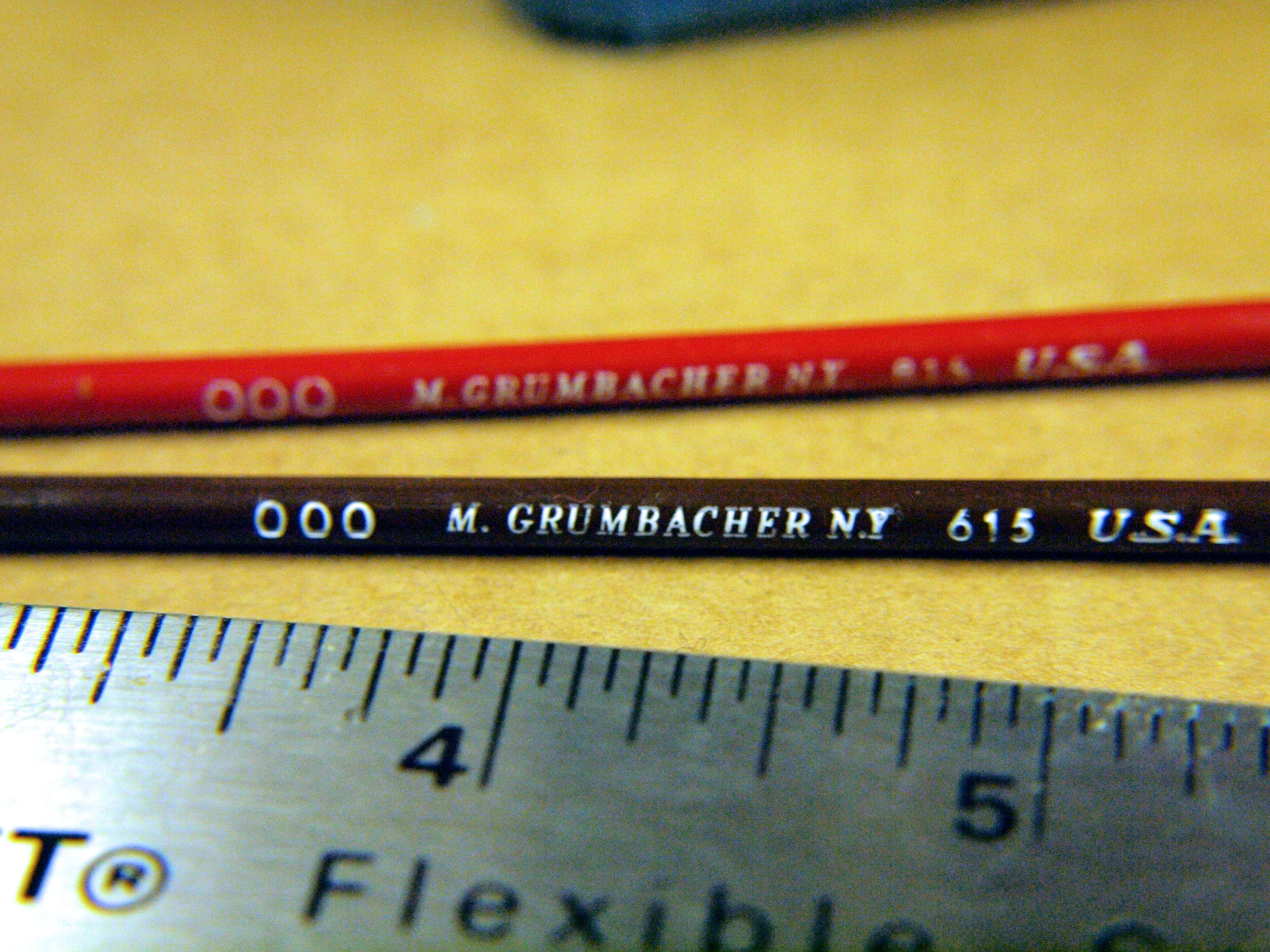
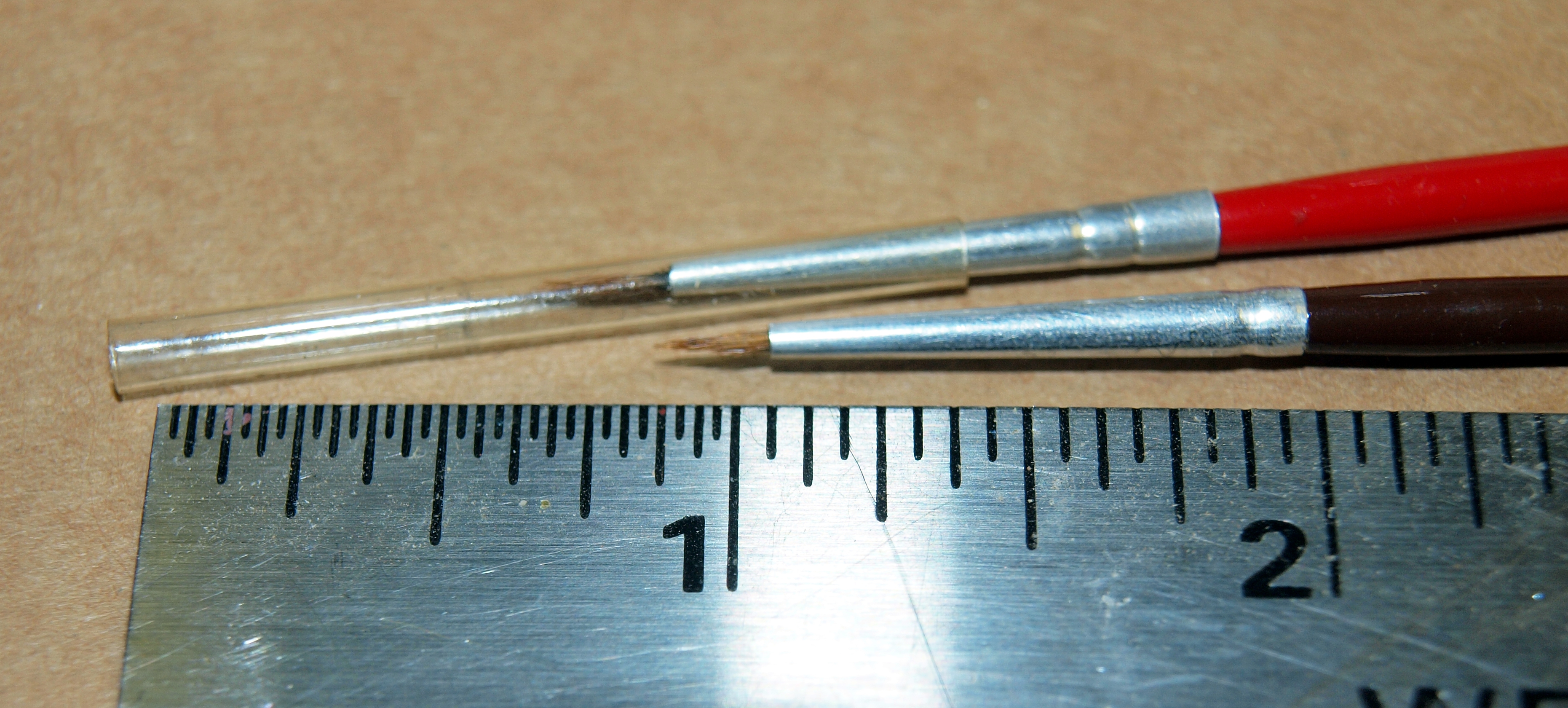
Before we had digital retouching if there was a flaw or dust spot in a picture the way to fix it was with a brush and spot tone dye. Good retouching was an art in itself in the past but now it is something people have not even heard of. Now it is easy to digitally retouch a picture and with digital mediums you don't even have the problem of dust anymore. With film dust was and still is a real problem. Static in the film causes every bit of dust in the air to stick to it and when you print it all those little dust specks show up on the print. We used special anti static brushes to try and help with the problem but in the end most pictures had to be spotted to remove those specks that got through. The college photography classes that I took years ago required all prints to be spotted. If you turned in a print for a grade that was not spotted the best grade you could expect for it would be a C-. So we all learned to spot pictures.
I went back into my storage boxes and dug out some of my examples of spotting and also pulled out my old SpoTone and brushes so I could show you how it is done. If you want to do film work today spotting is something you should know about.
Spotting is not an expensive process. The brushes and the spot tone are pretty cheap. But it does take a lot of practice to learn how to do it correctly. If you try it, don't start out with a good print. I used to save a lot of the "mistakes" that I printed partly so I could practice spotting. When you make a mistake your print is ruined as there is no way to undo the dye process so practice until you can do it correctly if you want to try it.
I went back into my storage boxes and dug out some of my examples of spotting and also pulled out my old SpoTone and brushes so I could show you how it is done. If you want to do film work today spotting is something you should know about.
Spotting is not an expensive process. The brushes and the spot tone are pretty cheap. But it does take a lot of practice to learn how to do it correctly. If you try it, don't start out with a good print. I used to save a lot of the "mistakes" that I printed partly so I could practice spotting. When you make a mistake your print is ruined as there is no way to undo the dye process so practice until you can do it correctly if you want to try it.
Mixing Shades
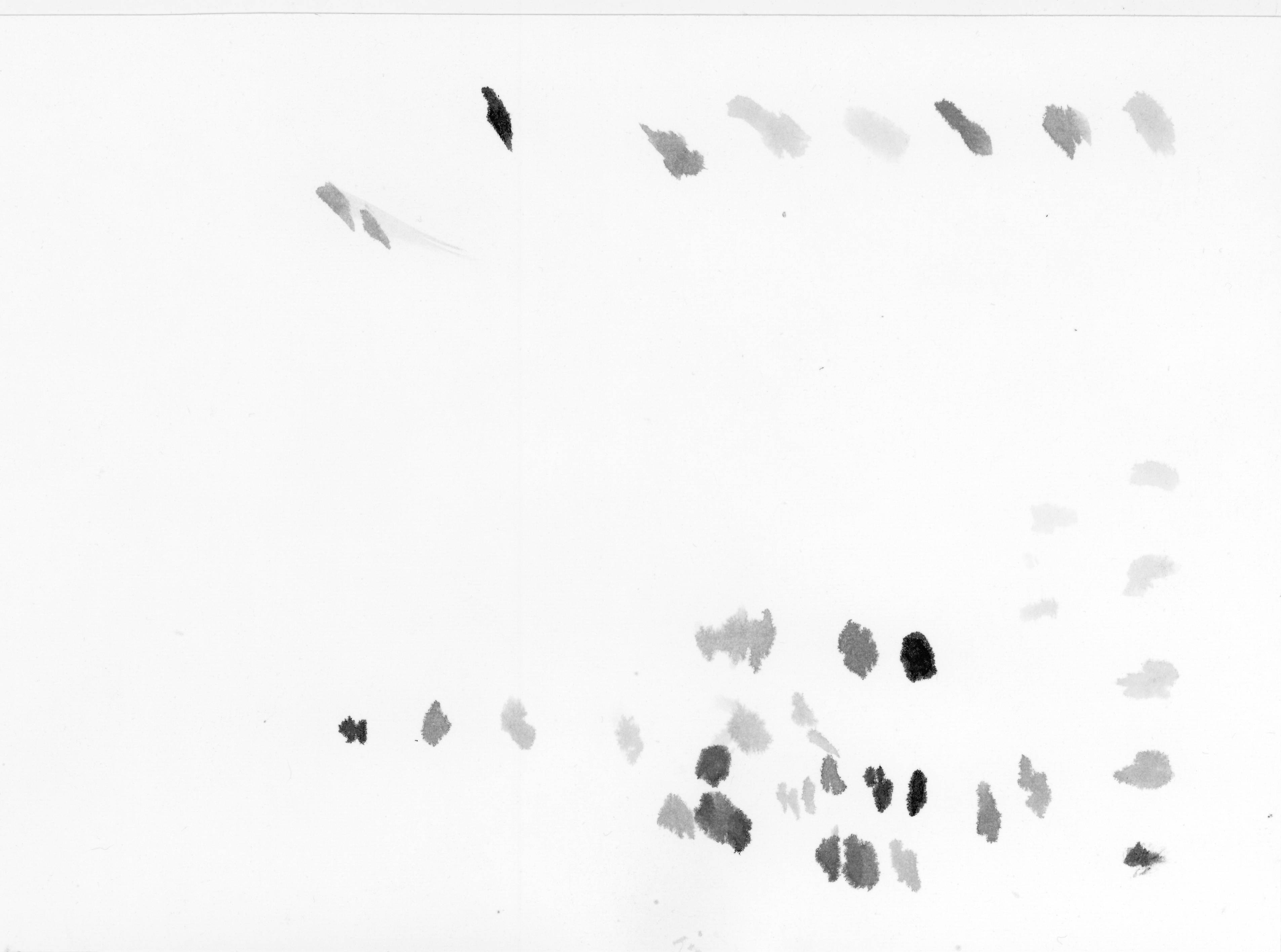
Spot tone is actually a water base dye. There are several colors of it, an olive one for doing sepia toned prints, a blue black one for blue colored prints and a black one for regular black and white. If you did color prints spotting was a whole different process with multiple dyes.
I checked on line and Spot tone is still available and is still pretty reasonable in price.
There is only one shade of each color of spot tone. To get lighter shades you thin it down with water. The normal way to do that is to have a small amount of water in something like a bottle cap and then just dip the brush in it and try it on an old piece of photo paper to check the shade. So you end up with a series of drops each lighter than the other. It takes a surprisingly small amount of spotter to do a print. I often just used the cap of the spot tone bottle to get enough dye. Just dip the brush in the little bit in the cap. Since it is a water base dye if it dries out all you have to do is add some water. One of my bottles had dried up while sitting in the desk and I just added water to it and after some shaking it was good as new.
I had a professor who used to just lick his brush until it got to the shade he wanted. We all thought that was pretty strange but apparently it isn't toxic.
Once it is applied to a print it becomes a part of the print. It is a dye and so it changes the print. You can't just put water on it and wipe it off if you get to much on a spot. Also the longer you leave a drop on a spot the darker it becomes. So the technique is to dab it on and leave it sit a moment and then wipe off the excess. If its not dark enough then do it again. You keep repeating until the dust spot disappears.
I checked on line and Spot tone is still available and is still pretty reasonable in price.
There is only one shade of each color of spot tone. To get lighter shades you thin it down with water. The normal way to do that is to have a small amount of water in something like a bottle cap and then just dip the brush in it and try it on an old piece of photo paper to check the shade. So you end up with a series of drops each lighter than the other. It takes a surprisingly small amount of spotter to do a print. I often just used the cap of the spot tone bottle to get enough dye. Just dip the brush in the little bit in the cap. Since it is a water base dye if it dries out all you have to do is add some water. One of my bottles had dried up while sitting in the desk and I just added water to it and after some shaking it was good as new.
I had a professor who used to just lick his brush until it got to the shade he wanted. We all thought that was pretty strange but apparently it isn't toxic.
Once it is applied to a print it becomes a part of the print. It is a dye and so it changes the print. You can't just put water on it and wipe it off if you get to much on a spot. Also the longer you leave a drop on a spot the darker it becomes. So the technique is to dab it on and leave it sit a moment and then wipe off the excess. If its not dark enough then do it again. You keep repeating until the dust spot disappears.
The Spotting Process
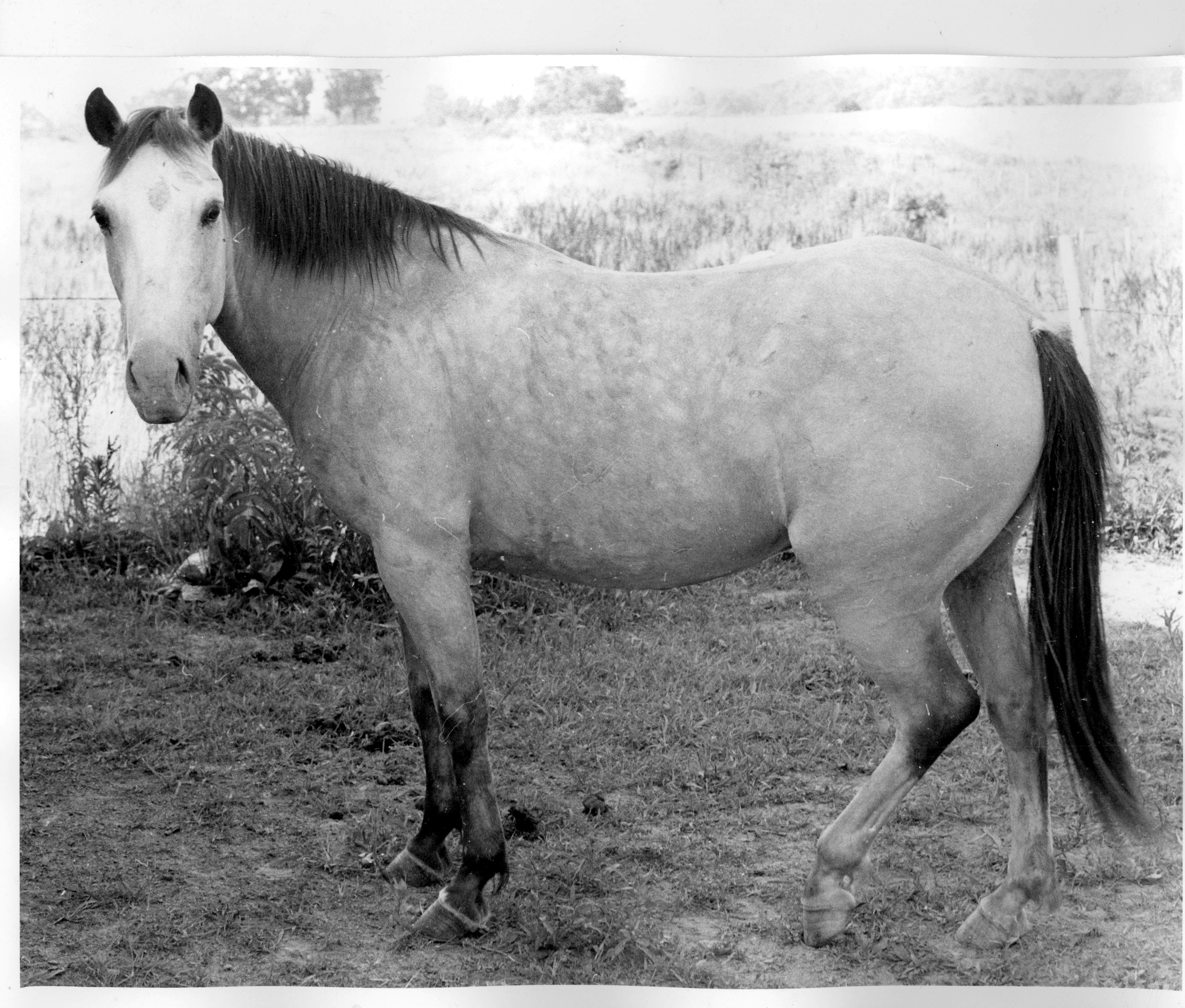
Although the process looks like water color painting its a lot different. The longer you leave the dye sit on the paper the darker a spot it will leave. its best to start with a light shade and gradually darken the spot with multiple applications. You can't go back if you get it to dark. So the idea is to be conservative.
You might find yourself with a magnifying glass to see the spots close up. Also a desk lamp that can be moved close to the print helps also. This is very close up work. And it takes a lot more time than digital retouching. Although I was pretty good at doing it I can't say that I miss it. One of the big advantages of digital retouching is that you can blow the picture up really big so you can see the smallest defects. Also you have an undo button. There is no undo with a brush.
You might find yourself with a magnifying glass to see the spots close up. Also a desk lamp that can be moved close to the print helps also. This is very close up work. And it takes a lot more time than digital retouching. Although I was pretty good at doing it I can't say that I miss it. One of the big advantages of digital retouching is that you can blow the picture up really big so you can see the smallest defects. Also you have an undo button. There is no undo with a brush.
An Example of What You Can Do
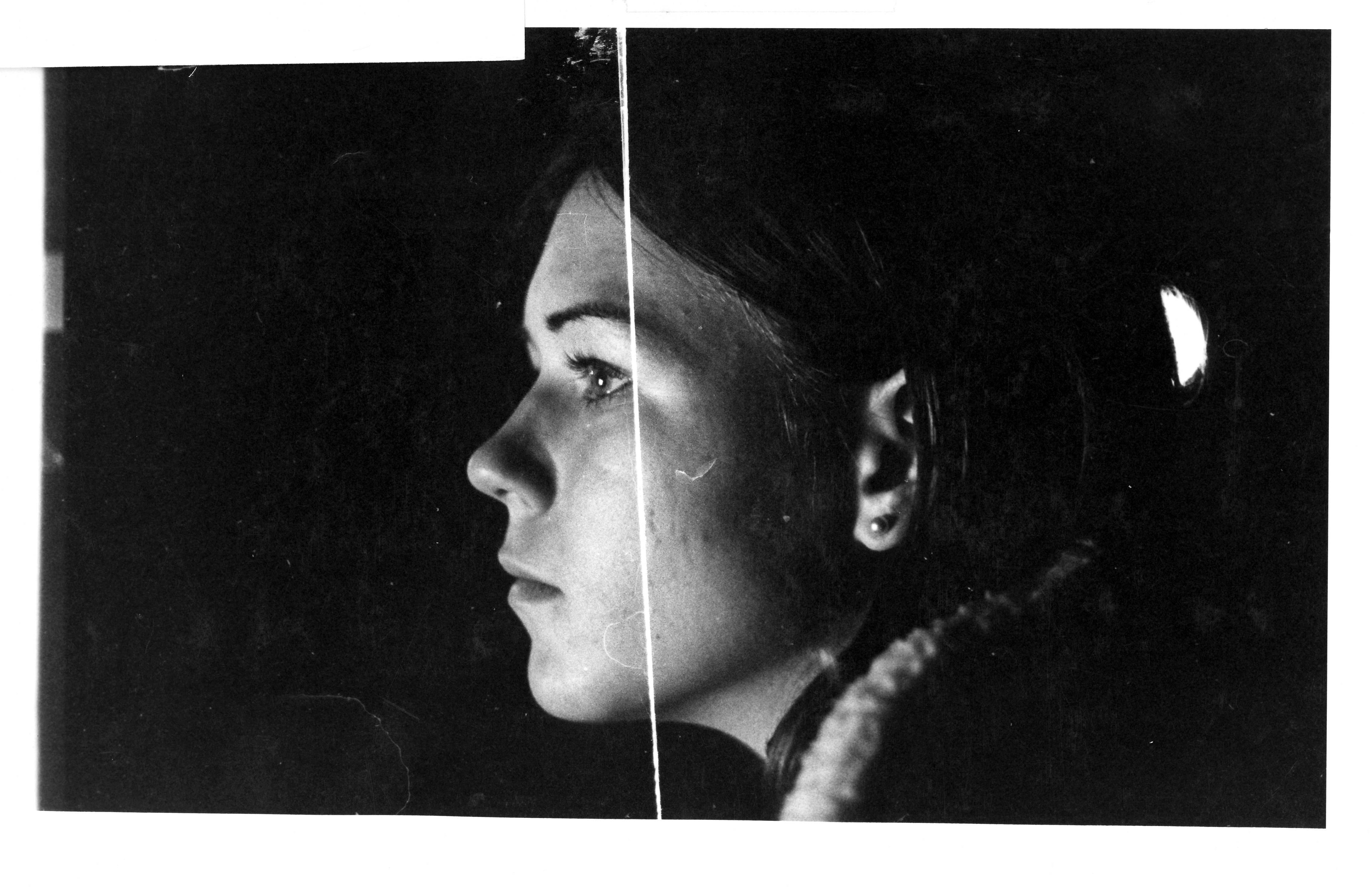
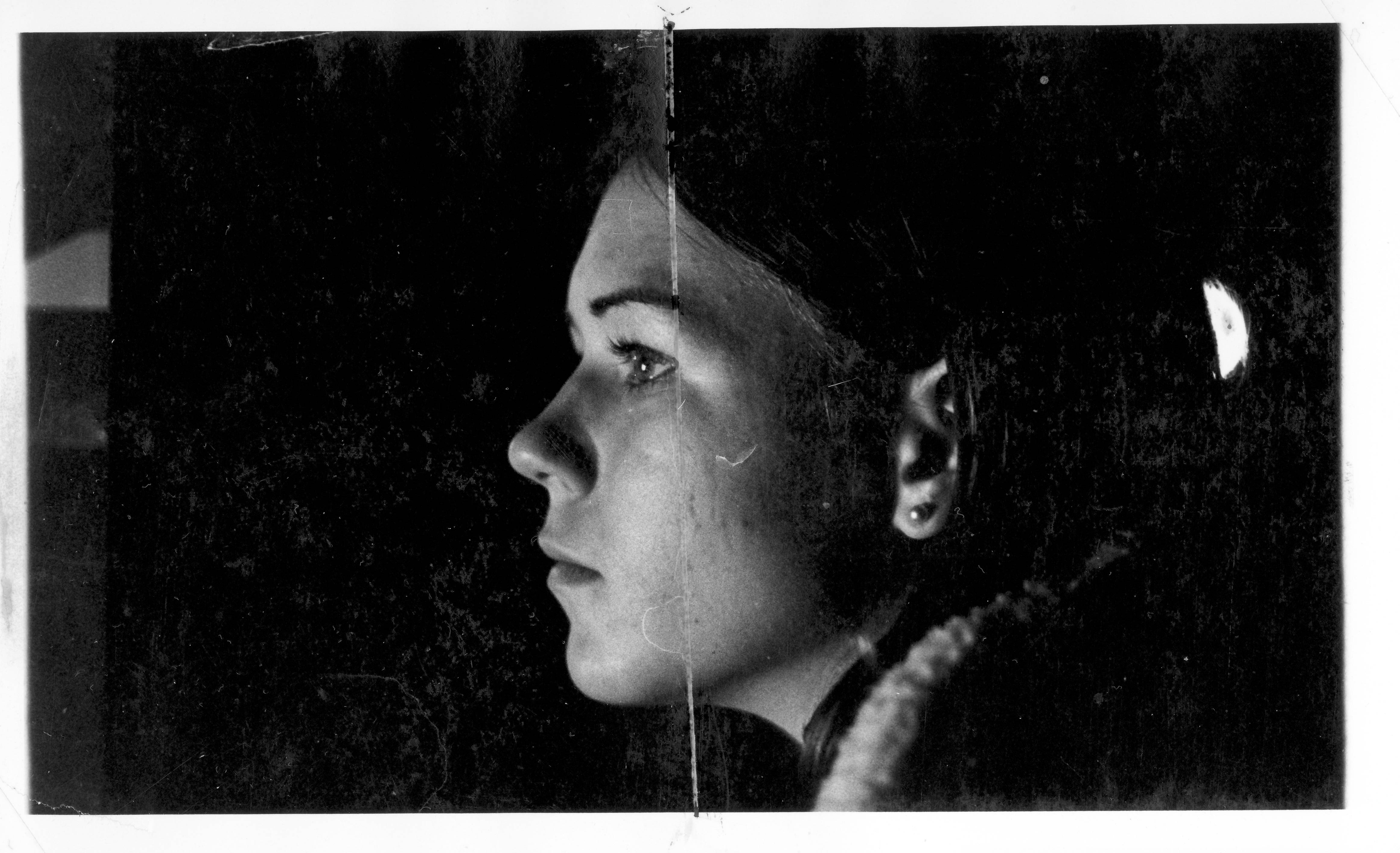
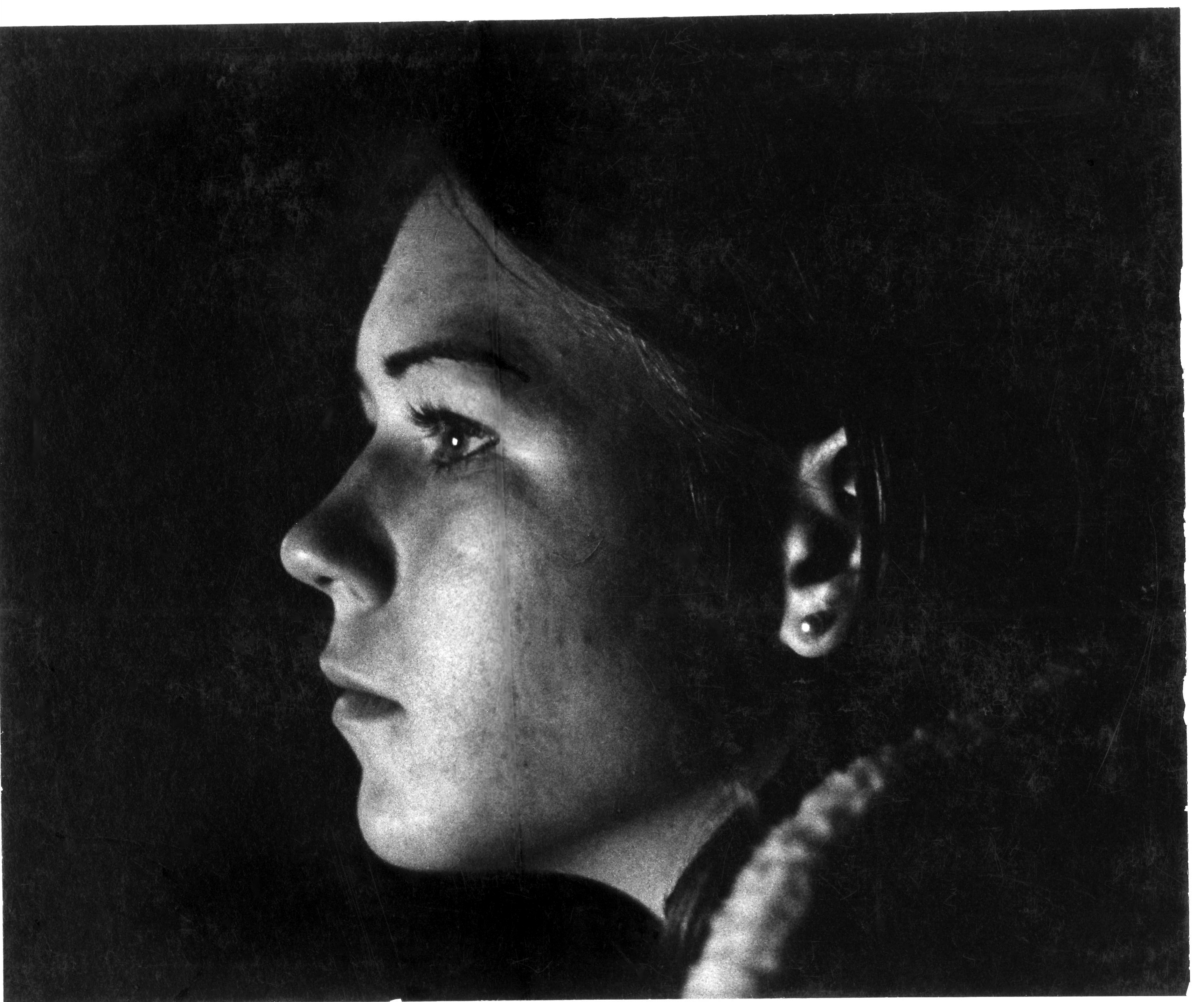
I tried taking some pictures by firelight once as an experiment. Anyway the roll of film in the camera was half exposed already and I wanted to push the firelight pictures to the max. Pushing is a special development technique where we use special developer and higher temperatures so we can get more sensitivity out of the film. A TriX 400 film could be pushed to 1200 ASA with the developing technique. So I wanted to push the half that was shot by firelight. This meant that I had to cut the film in half in the darkroom. There was no way of knowing where to cut, it was just a guess, so I took the scissors and in the dark tried to find the half way point and then cut. Well of course I got it wrong. In fact I cut right down the middle of one of the best shots. Determined not to loose it I printed both half's on the same paper and then retouched the slice. It turned out pretty good. In the finished print it looks totally blended. However if you blow the picture up to a larger size (compliments of a good scanner) the retouching becomes visible. Now today if I wanted I could continue with digital retouching and totally blend the line out. But for back then this was pretty good work.
Toneing Big Areas
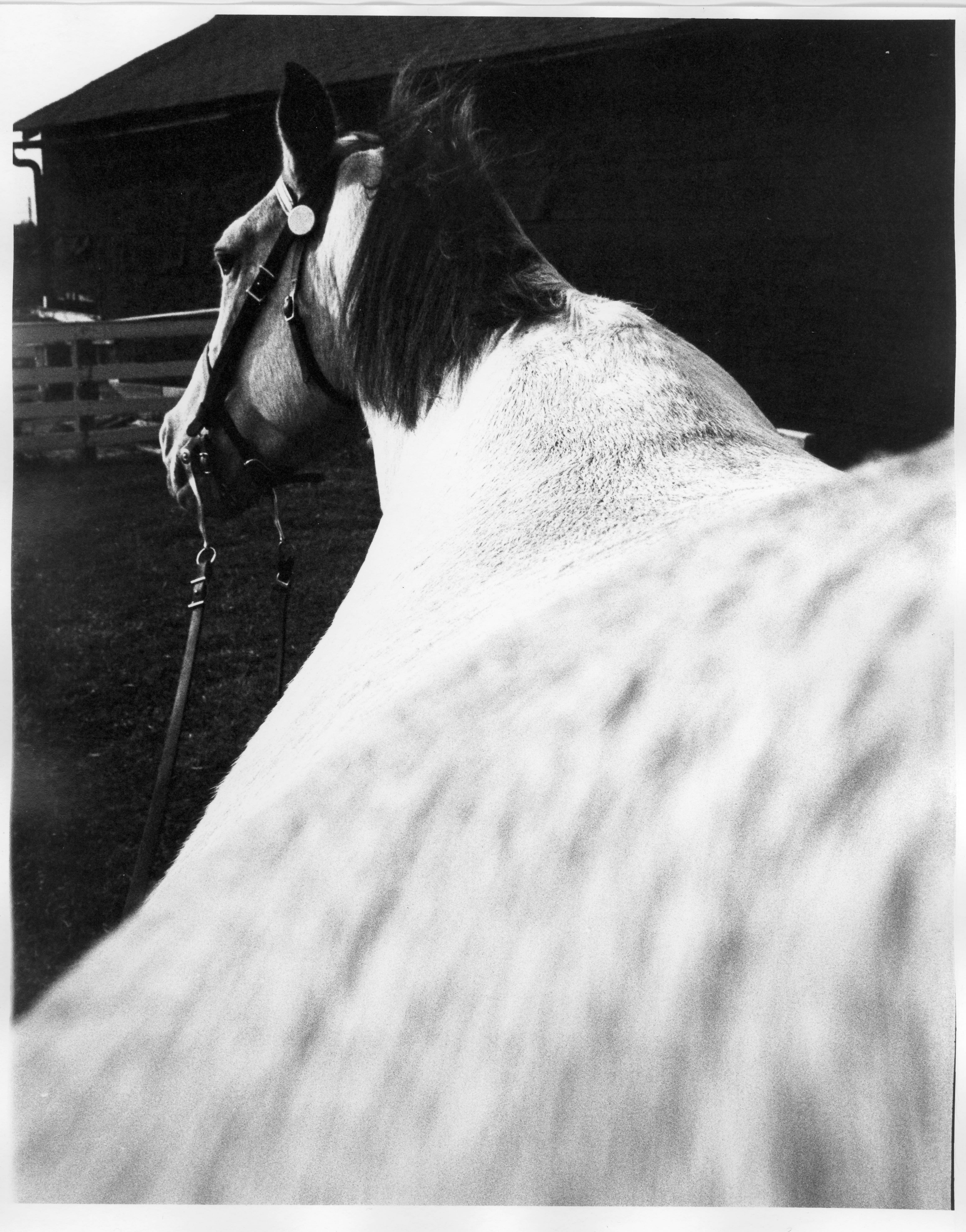
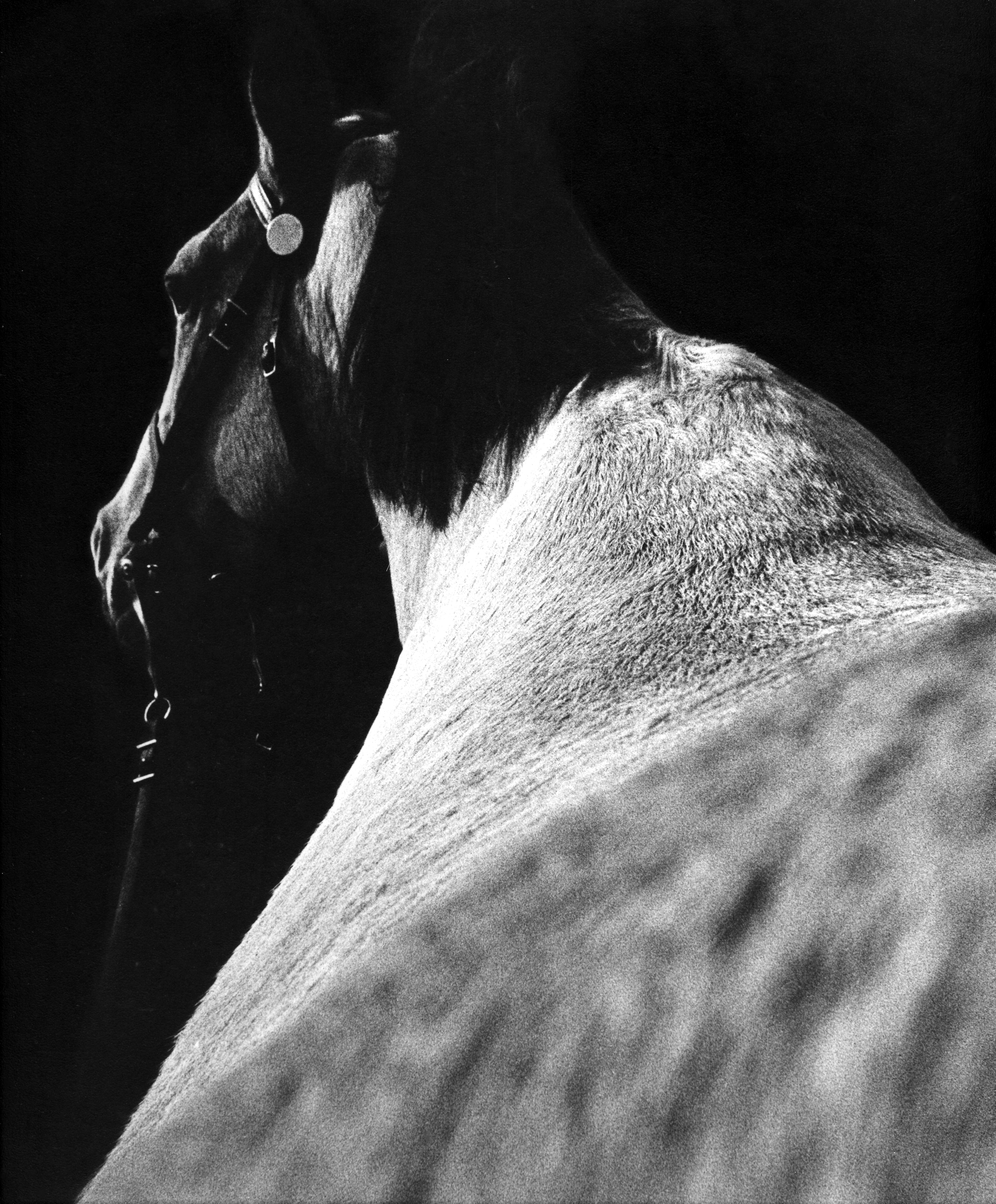
I shot this picture and printed it and thought that it would look really interesting if I could get the entire area in the background to be black. I tried burning it in while printing but that only got it part way. I finished up with a brush and a lot of spot tone. It is hard to get the dye to be black so it took many coats to get it where I wanted. I think the end result was pretty good. It gave an interesting perspective and made use of the film grain also. This picture would just not work in color the way it does In B&W. The final finished print is 10 inches by 14 inches which emphasizes the long perspective and it is dry mounted on a 16 X 20 board. The full picture did not fit my scanner.